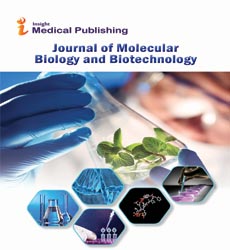Mouse Freak Phenotyping at Scale Uncovers Novel Qualities Controlling Bone Mineral Thickness
Shawn Franklin*
Department of Biology, Yamaguchi University, Yamaguchi, Japan
- *Corresponding Author:
- Shawn Franklin
Department of Biology,
Yamaguchi University,
Yamaguchi,
Japan,
E mail: shawanFrank@yamachi.jp
Received Date: March 05, 2021; Accepted Date: March 19, 2021; Published Date: March 26, 2021
Citation: Franklin S (2021) Mouse Freak Phenotyping at Scale Uncovers Novel Qualities Controlling Bone Mineral Thickness. J Mol Biol Biotech Vol.6 No.2:e001.
Abstract
The hereditary scene of infections related with changes in Bone Mineral Density (BMD) like osteoporosis, is just incompletely perceived. Here, we investigated information from 3,823 freak mouse strains for BMD, an action that is regularly changed in a scope of bone pathologies, including osteoporosis. An aggregate of 200 qualities were found to essentially influence BMD. This pool of BMD qualities involved 141 qualities with beforehand obscure capacities in bone science and was integral to pools got from on-going human examinations. Nineteen of the 141 qualities additionally caused skeletal anomalies. Assessment of the BMD qualities in osteoclasts and osteoblasts underscored BMD pathways, including vesicle transport, in these cells and along with in silico bone turnover examines brought about the prioritization of competitor qualities for additional examination. The interest in recognizing related qualities has prompted a progression of studies. In any case, just a predetermined number of osteoporosis-related qualities have effectively done.
Keywords
Biology; DNA; RNA; Osteoporosis; Bone Mineral Density (BMD)
Editorial Note
BMD and expanded break hazard, which causes a significant wellbeing trouble around the world. With the disclosure that BMD attributes are heritable. The International Mouse Phenotyping Consortium (IMPC) phenotyping pipeline cross examines a scope of organ and tissue types, including the skeleton. The skeletal interest in recognizing related qualities have prompted a progression of studies. In any case, just a predetermined number of osteoporosis-related qualities have effectively been found, provoking proceeding with interest in qualities controlling. All the more as of late, three refined Genome-Wide Affiliation Considers (GWAS) on osteoporosis and osteoarthritis qualities were accounted for. They exhibited the force of GWAS for the quick recognizable proof of new human hereditary loci prone to be related with osteoporosis. In any case, the recognizable proof of the particular qualities that cause BMD adjustments stayed testing. The IMPC phenotyping pipeline cross examines a scope of organ and tissue types, including the skeleton. The skeletal tests include Double Energy X-Beam Absorptiometry (DXA) based proportions of the three significant bone boundaries bone zone, bone mineral substance (BMC), and the subsequent BMD. Further to this, planar radiographic pictures are utilized for location of skeletal irregularities. This investigation tested the IMPC information discharge 6.0 and zeroed in on qualities controlling BMD. This action was chosen in light of the fact that in the clinical setting, in veterinary medication, and in hereditary mouse models low BMD is a sign of osteoporosis. Bone mineral thickness information on 3,823 qualities were recorded and investigated. Inside this quality set, we distinguished 200 qualities that caused a measurably critical lessening or expansion in BMD when contrasted with control creatures. Together, the pool of 200 BMD qualities was then examined further. A lion's share, 123 qualities, created a low BMD aggregate, while 64 qualities caused a high BMD aggregate. Likewise, 13 qualities were related with either a low or high BMD aggregate, contingent upon sex. Along these lines, the 200 BMD qualities were gotten from 213 freak mouse lines, of which 161, 47, and 5 were homozygotes, heterozygotes, and hemi zygotes.
Open Access Journals
- Aquaculture & Veterinary Science
- Chemistry & Chemical Sciences
- Clinical Sciences
- Engineering
- General Science
- Genetics & Molecular Biology
- Health Care & Nursing
- Immunology & Microbiology
- Materials Science
- Mathematics & Physics
- Medical Sciences
- Neurology & Psychiatry
- Oncology & Cancer Science
- Pharmaceutical Sciences
